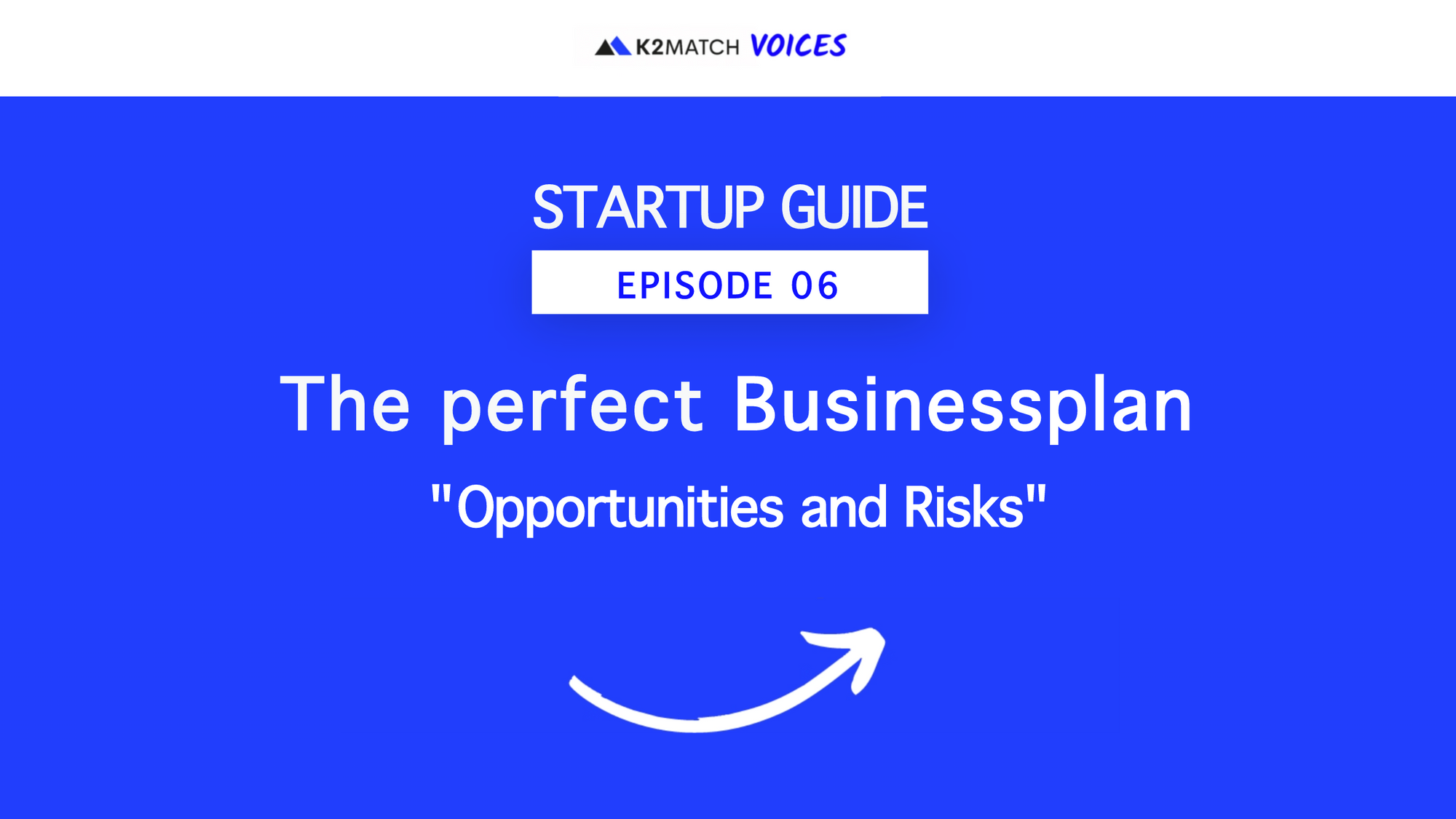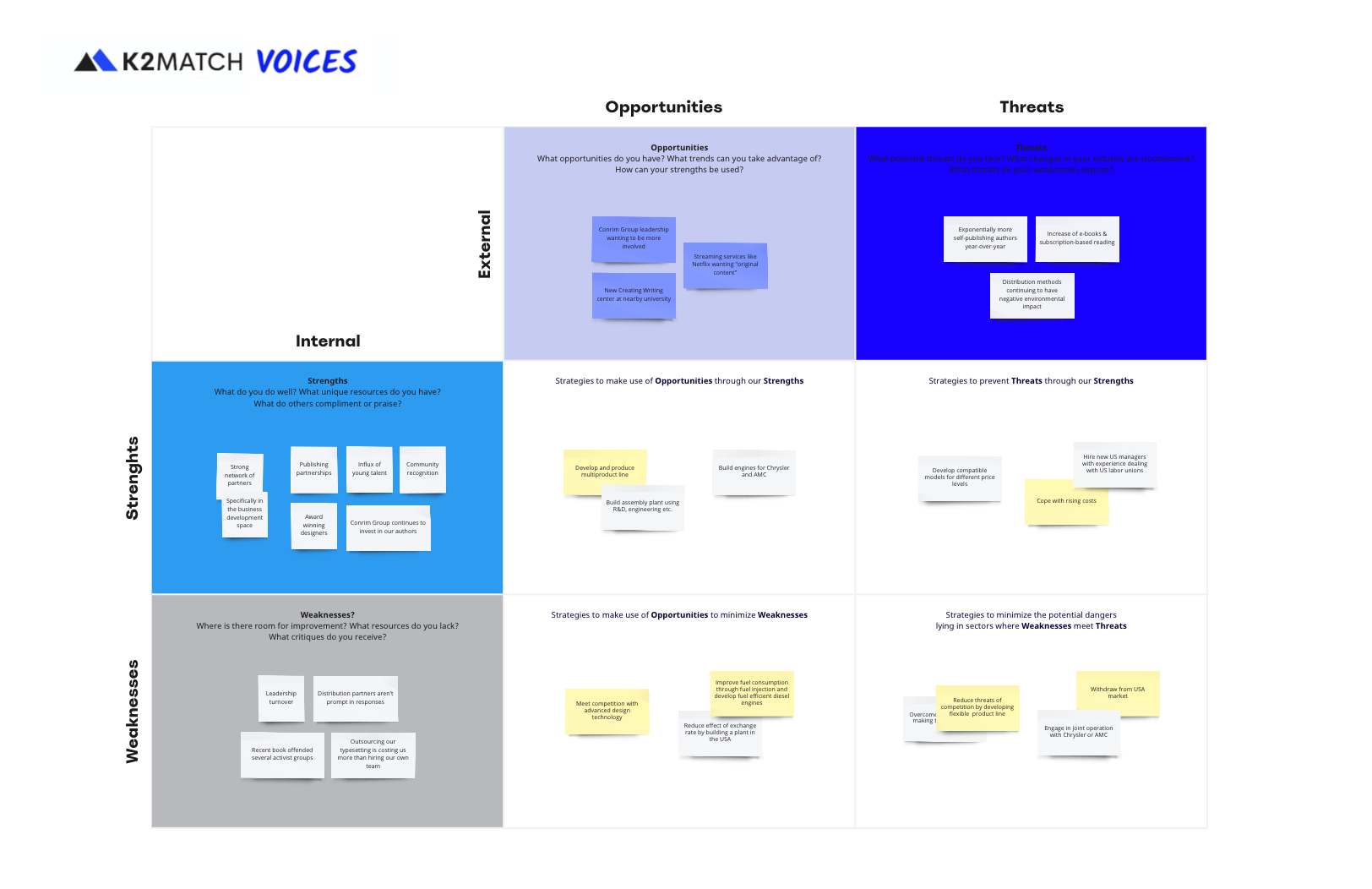Opportunities and Risks

Your development and your scope of action depend to a large extent on your ability to seize opportunities, recognize risks at an early stage and counter them effectively. To do this, it is important to know your strengths and weaknesses.
A SWOT analysis comprises a strengths-weaknesses analysis and an opportunities-threats analysis. It summarizes the main results of the analysis of internal processes and the findings of external factors influencing the company.
The aim of the SWOT analysis is to find out the extent to which the current strategy of the company in view of the promises to be successful in the face of the given environmental influences. In addition, the company's specific strengths and weaknesses are to be examined to determine whether they are sufficiently suitable for responding to changes in the corporate environment.
The result of the SWOT analysis should highlight the strategic internal and external challenges facing the company and the means of overcoming them. From this, strategic goals and measures are to be derived.

Questions to be answered in this chapter:
- What are the company's core competencies?
- Where does your company have a performance advantage over others?
- What are the company's development needs?
- What opportunities exist to give the company a competitive advantage or to operate profitably?
- Which trends/developments can lead to uncalculated sales/revenue growth? What measures are necessary to be able to serve these needs? Which trends/developments could lead to sales or profit losses? What countermeasures are then planned? Evaluate the necessary measures in monetary terms.
Here are some more information related to the beauty and the power of the SWOT Analysis and how to implement it:
The SWOT analysis was developed by the middle of the 1960s for large organizations to determine the strategic fit between an organization’s internal, distinctive capabilities and external possibilities and to prioritize actions.
SWOT stands for Strengths, Weaknesses, Opportunities and Threats. In the early 1950s, two professors of business policy at Harvard, George Albert Smith and C. Roland Christensen, began questioning whether a firm's strategy matched its competitive environment.
In 1960, a number of large American enterprises commissioned a long-range study at Stanford Research Institute to investigate why their long range planning efforts were unsuccessful. SRI's research team -- Marion Dosher, Otis Benepe, Albert Humphrey, Robert Stewart and Birger Lie -- interviewed 5,000 managers at 1,000 companies over nine years. They found that the difference between what an organization planned to do and what they actually accomplished was about 35%.
The problem was not the management team's quality of information, but their ability to reach a committed agreement on constructive objectives rather than settling for feeble compromises. Part of the team's methodology to make strategic decision making more explicit was to determine what the interviewees found positive and negative about the present and the future.
The team developed SWOT for this purpose. The SWOT framework was first described in detail in the late 1960's by Edmund P. Learned, C. Roland Christiansen, Kenneth Andrews, and William D. Guth in Business Policy, Text and Cases (Irwin, 1969).
The acronym's definitions are:
- Strengths those potential factors that make a firm more competitive than its direct competitors.
- Weaknesses both potential limitations and defects ingrained in an organization and/or weak factors relative to direct competitors
- Opportunities future factors that allow the organization to improve its relative competitive position.
- Threats those future factors that reduce the firm's relative competitive position.
The steps in the common three phase SWOT analysis process are:
Phase 1: Detect strategic issues
- Identify external issues relevant to the firm's strategic position in the industry and the general environment at large with the understanding that opportunities and threats are factors that management cannot directly influence.
- Identify internal issues relevant to the firm's strategic position.
- Analyze and rank the external issues according to probability and impact.
- List the key strategic issues factors inside or outside the organization that significantly impact the long-term competitive position in the SWOT matrix.
Phase 2: Determine the strategy
5. Identify firm's strategic fit given its internal capabilities and external environment.
6. Formulate alternative strategies to address key issues.
7. Place the alternative strategies in one of the four quadrants in the SWOT matrix. Strategies that combine: internal strengths with external opportunities are the most ideal mix, but require understanding how the internal strengths can support weaknesses in other areas; internal weaknesses with opportunities must be judged on investment effectiveness to determine if the gain is worth the effort to buy or develop the internal capability, internal strengths with external threats demand knowing the worth of adapting the organization to change the threat into opportunity; internal weaknesses with threats create an organization’s worst-case scenario. Radical changes such as divestment are required.
8. Develop additional strategies for any remaining "blind spots" in SWOT matrix.
9. Select an appropriate strategy.
Phase 3: Implement and monitor strategy
10. Develop action plan to implement strategy.
11. Assign responsibilities and budgets.
12. Monitor progress.
13. Start review process from beginning.
The Article was provided by K2MATCH and inspired bei NUK

